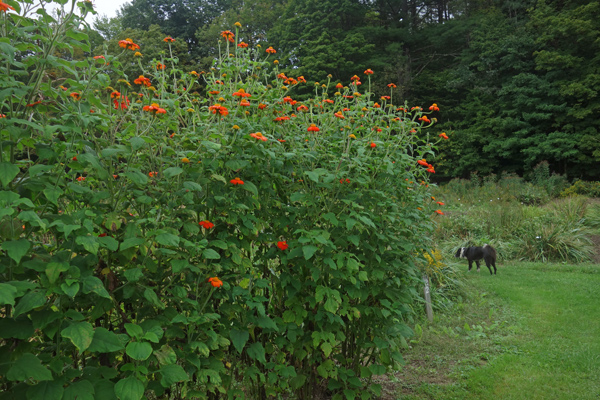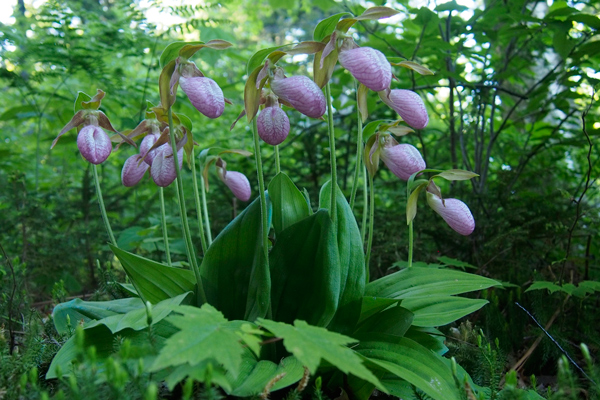Every year we plant a variety of annuals in our border between the grass walkways and the daylily beds. We can do this as we rototill the edges between the beds and grass walkways in the spring. We found it's a great way to add color to the garden and have cut flowers to boot.
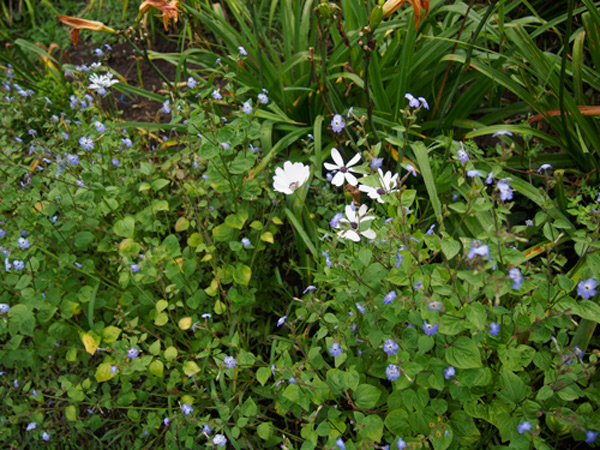
African Daisy is a new one this year. They sure are bright, but they aren't a good performer so far. On the other hand Lobelia americana is now one of our favorites. This Lobelia, tolerates full sun and somewhat dry conditions and once it gets going it's just smothered in light blue blooms!
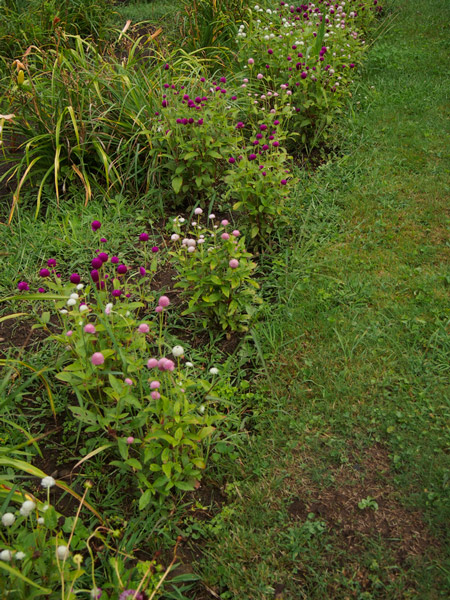
Gomphrena is a new one this year. Very nice and colorful. They can be grow for cut flowers but we have just been admiring them in the field, uncut.
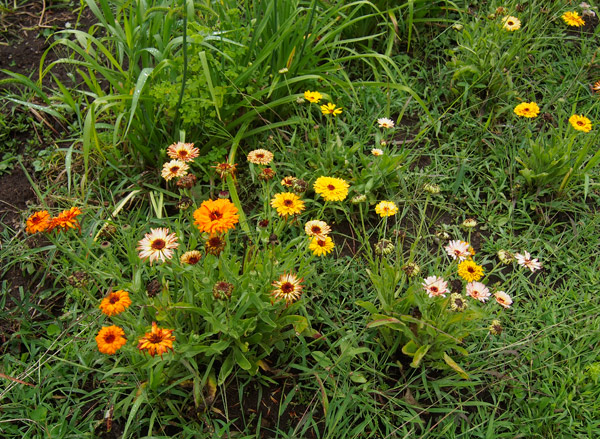
Calendula: This is always a welcome sight in the annual beds. Low daisy-like blooms in a variety of colors. I particularly like this mix as there is some variation of shades. I believe this is Flashback Mix.
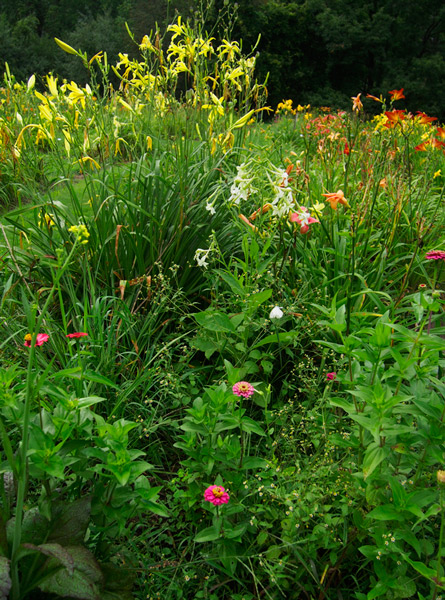
Here is an example of how annuals and daylilies can work well together. The tall daylilies in the back form a part of a tiered planting. With daylilies, then Nicotiana sylvestris and finally Zinnias.
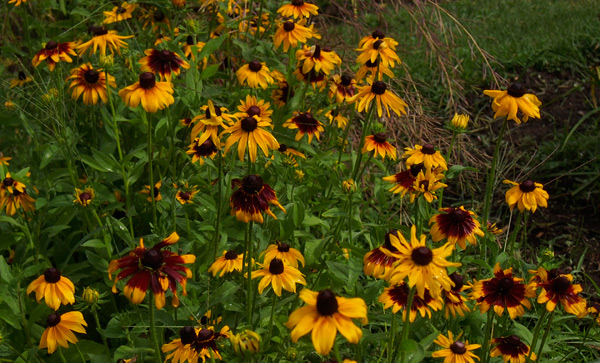
Annual Gloriosa Daisy; These bloomed profusely the first year, and so made a great show of mixed color black eyed susans.
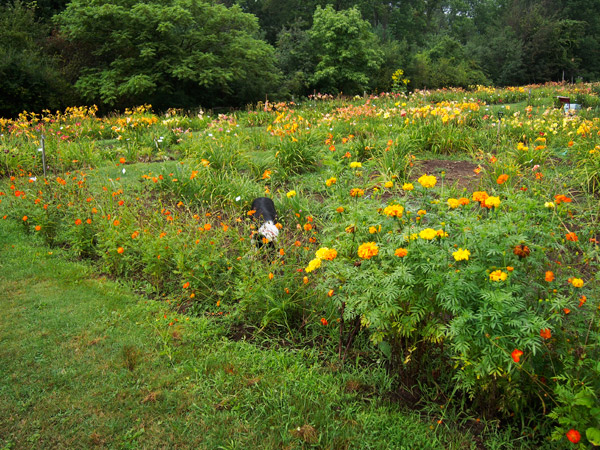
Tall marigolds and Orange Cosmos are always a great combination and good growers. We haven't been using them for cutting, but they really stand up tall and can be seen from a distance.
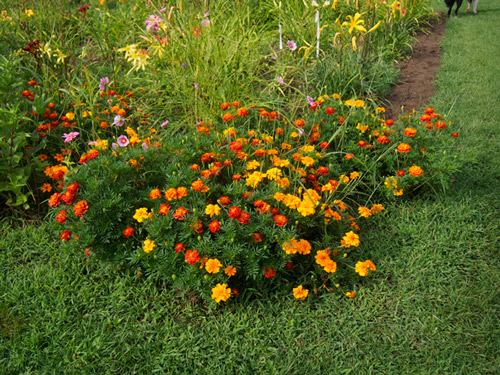
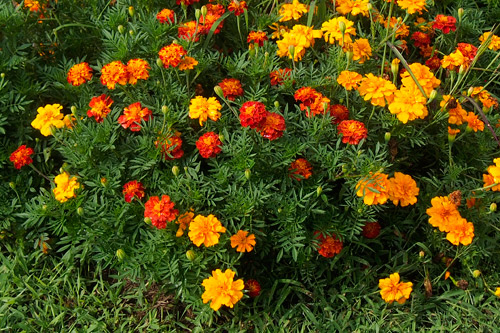
The shorter Marigolds are useful too, in fact we realized by accident how great they work on the corner of the planted edges
They make a nice low delineator at the corners, and the color mix is just fabulous!
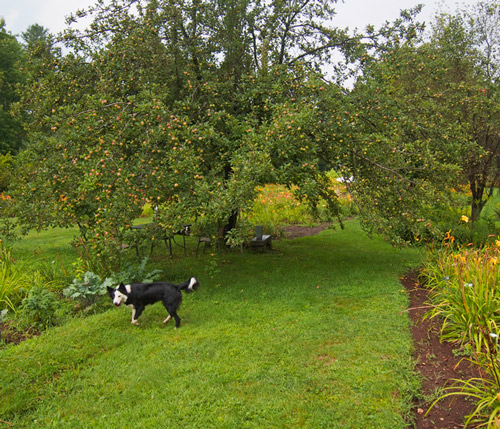
Lastly our apple tree which seems to bear biennially, is just loaded. The branches are actually starting to bend under the weight.
Pip our Border Collie loves it as it provides endless "balls" to carry around.
Interest in daylilies really began in the U.S. around the 1900's into the 1930's. Yeld and Stout are the two best known early hybridizers. They developed a number of hybrids closely related or derived from early blooming species.
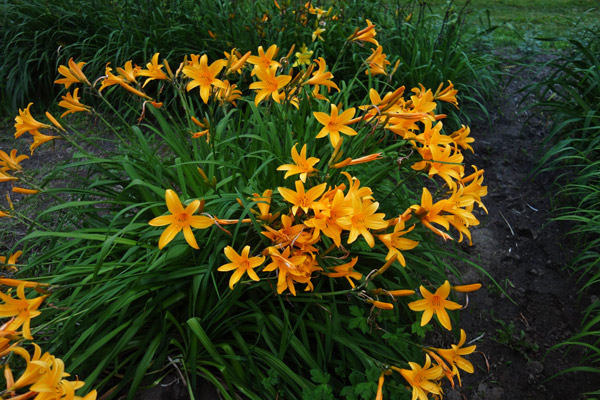
Orange Man: developed by Yeld, and by which many other early daylilies should be measured. Very early, frequently the first daylily to bloom in any garden. Orange Man will grow surprisingly well in areas with little sun. Stout writes: " Orangeman grows compactly and lustily and produces many flower stalks and flowers. A well-grown plant in the author's garden had over 500 flowers ...and about 90 flowers open at one time"
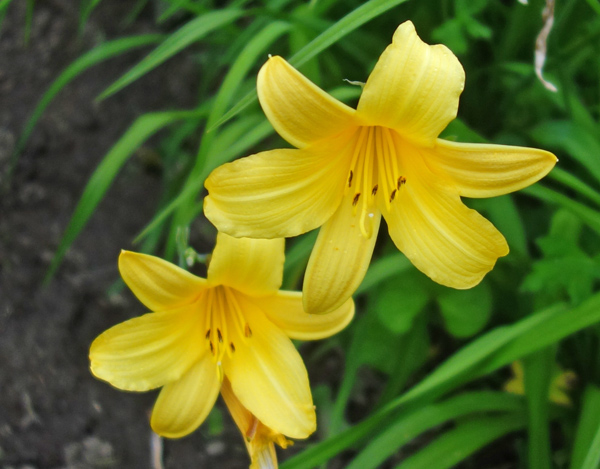
Gold Dust: Developed by Yeld, and already in the trade by 1906. Gold Dust is a cross between H. lilioaspedelus and H. dumortieri. This daylily has nice branching and red buds which add to the colorful character of this hybrid. Stout writes " One of the best early flowering semi-dwarf daylilies having H. dumortieri as one of it's parents"
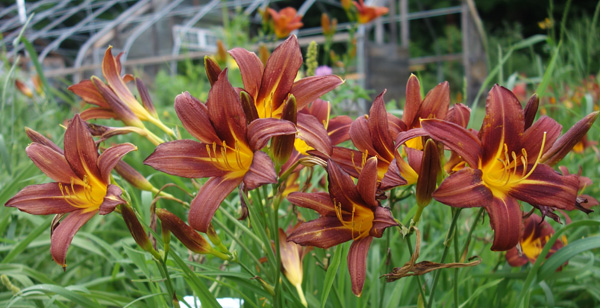
Naushon No Name: this daylily was discovered in a lady's garden on the island of Naushon. It is the first red to bloom and once established blooms profusely.

Elizabeth: Also from Stout, this daylily is derived from H. middendorfii, which is evidenced by its flat gold blooms.
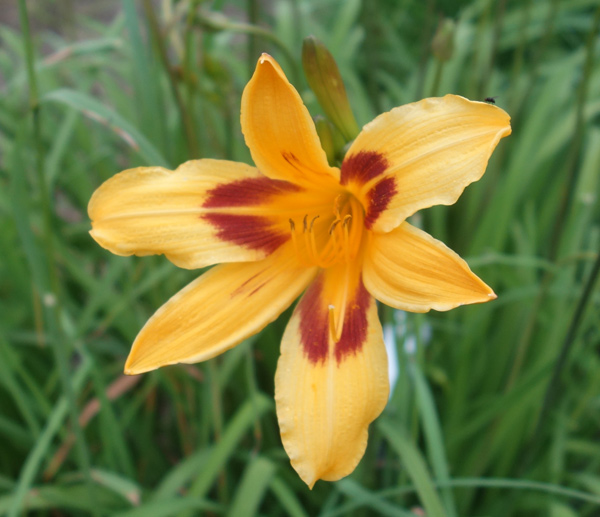
Buckeye: One of the first eyezone type daylilies to bloom.
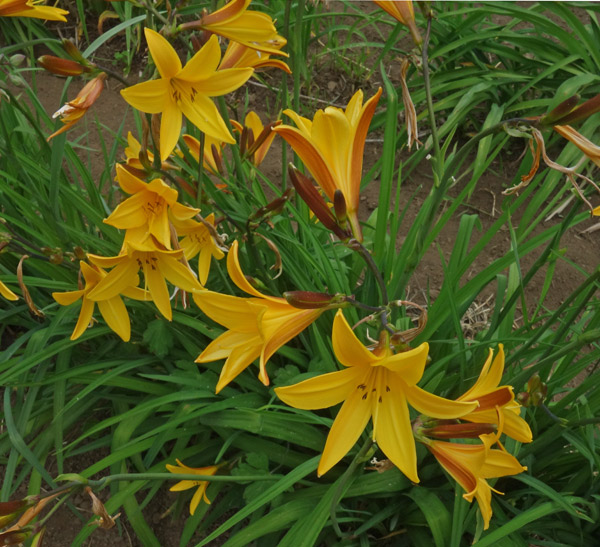
H. dumortieri. One of the species that began it all. This is one of our favorite daylily's, extra early, fragrant and colorful.
Stout notes: " Living plants of H. dumortieri were sent by M. von Siebold from Japan to the Botanical Garden at Ghent where they first flowered in 1832"
Coming soon: Heritage daylilies for mid season, including the wonderful H. fulva derived cultivars
the Monarch Butterfly has always been a summertime visitor here at Olallie Daylily Gardens.
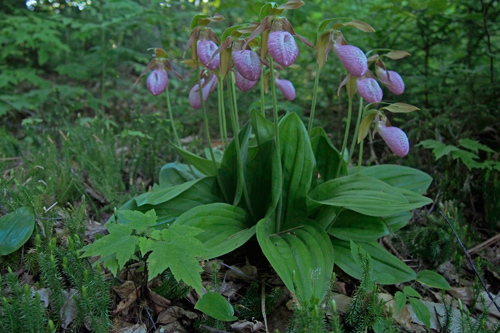
C. acuale growing in a woodland environment. This is a great shot to demonstrate the habitiast it likes, I think. Maple tree seedlings and Lycopodium abound, belying a poorly lit, moist acidic environment.
I was fortunate to be invited to a neighbors property to observe their Ladyslippers (Cypredium acaule). These are also called Moccasin Flowers, by native Americans, so that may be more appropriate.
C. acaule is quite rare, and typically one sees one or two in a given location, and no more. At this particular location, we counted hundreds spread out over 10 acres of woods.
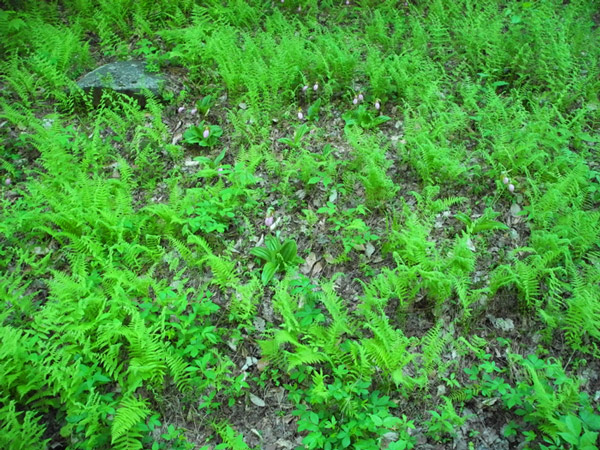
Many of the places that we saw the Moccasin Flower, they were hiding in plain sight. They just seemed to pop up out of the ferns.
Interestingly, C acaule, has a symbiotic relationship with a fungus in the soil, In order to survive and reproduce, "pink lady's slipper interacts with a fungus in the soil from the Rhizoctonia genus. Generally, orchid seeds do not have food supplies inside them like most other kinds of seeds. Pink lady’s slipper seeds require threads of the fungus to break open the seed and attach them to it. The fungus will pass on food and nutrients to the pink lady's slipper seed. When the lady’s slipper plant is older and producing most of its own nutrients, the fungus will extract nutrients from the orchid roots." (from USDA information).
C. acaule, also is quite widespread through out the northern parts of the East and almost all across Canada.
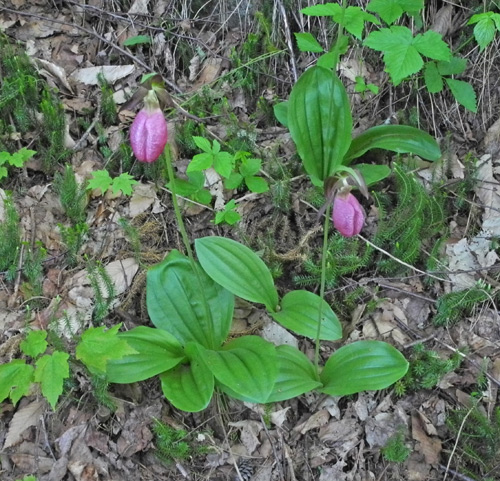
It was great too, to see young Moccasin Flowers growing near their parents
From what I gathered too, talking to the owners of the property where the Moccasin Flowers were growing, they are very unpredictable in appearance. One year a spot had dozens and dozens of blooming plants and this year only two plants were present.
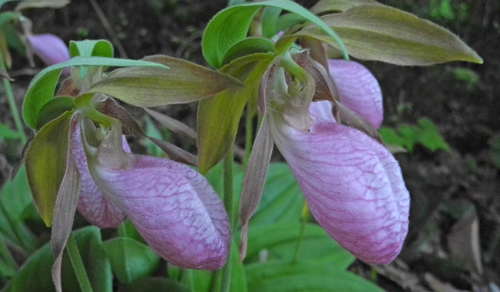
The flowers of C. acaule is quite unusual looking!
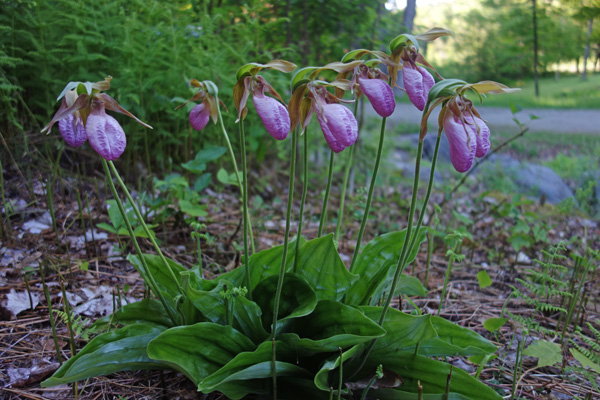
It's amazing to see such a mass of blooms this late in the season! Rouge Blush, RR Red, Rajastan Sands and Fall Pink Melon are all blooming strongly with days of not weeks to go!
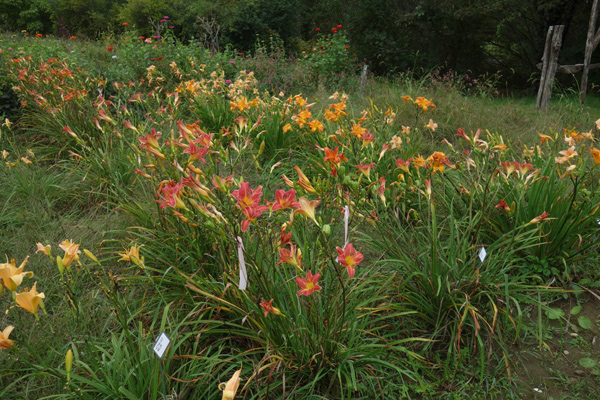
Fall Pink Melon: Still blooming away on September 20, 2018
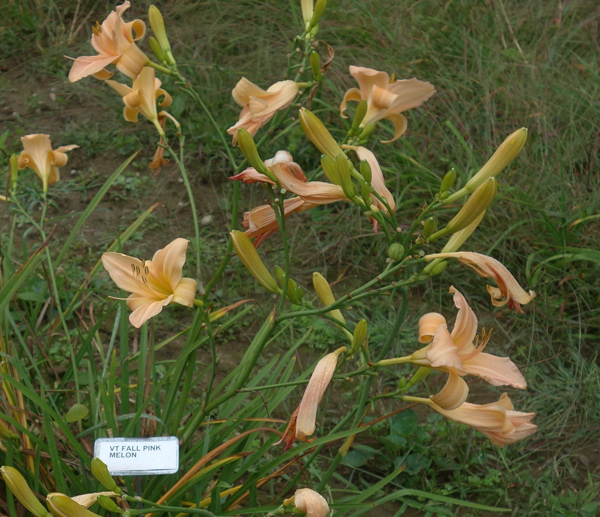
Christmas Red: This daylily is a bud builder. It just keeps making more buds, this year it looks like we'll get blooms almost until October!
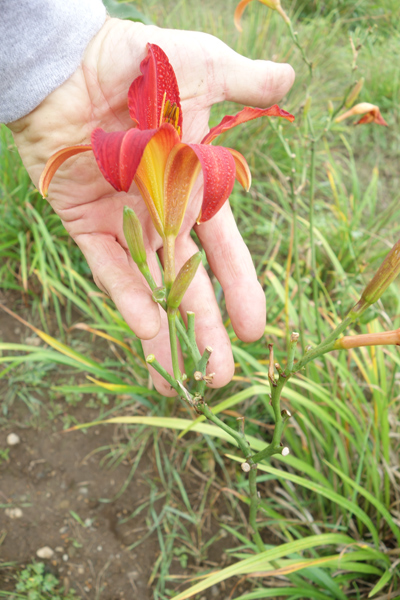
Rajastan Sands: Amazing bright orange blooms with heavy substance. Great branching too.
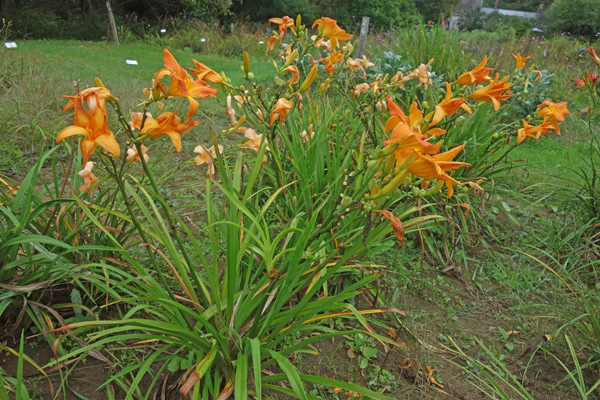
Tithonia towering over our Border Collie "Jack"
